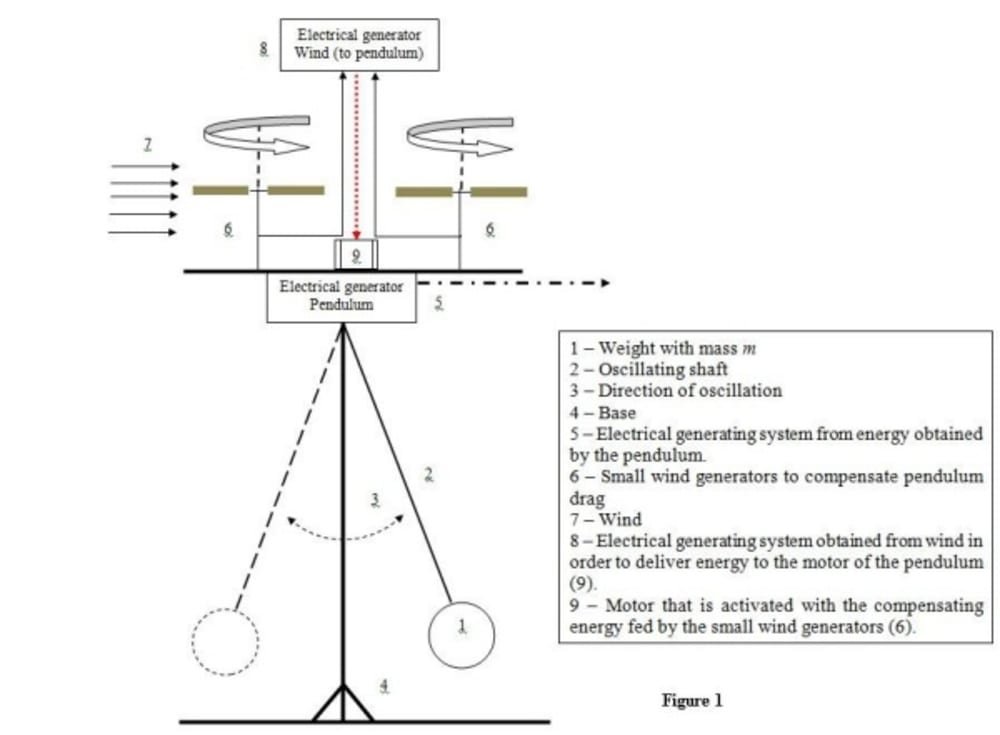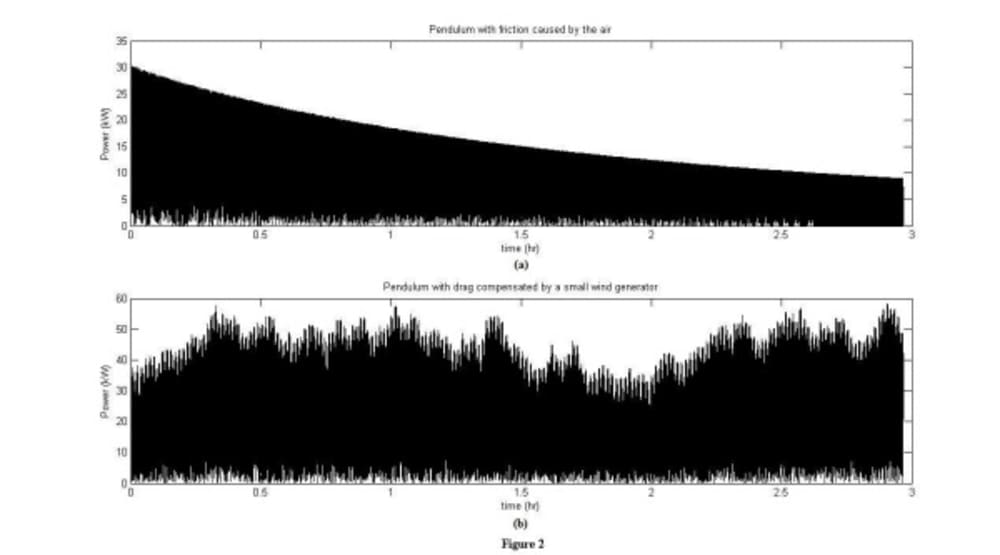A new method to obtain electrical energy is proposed. It is based on the use of the energy of an oscillating pendulum. As its movement is slowed by the friction with air, the innovation is the presence of a "drag-compensation system" that acquires energy from wind, as described in the figure 1 attached. A mass m (1) oscillates (3) in a shaft (2) by starting its movement from the rest, at an angle with the vertical axis. The shaft is around a base (4) and connected to an electrical generator (5), that transforms the mechanical oscillation into electrical energy to some station or town, indicated by the arrow. Small wind turbines are placed on the top (6), or elsewhere, to capture the wind energy (7) and convert it into additional electrical energy by using another electrical generator (8). This additional energy is delivered to the motor (9) that drives the pendulum the necessary impulse to compensate the energy lost by the friction with the air.
An energy facility based upon the system illustrated in figure 1 should comprise several pendulums connected in series in order to smooth the oscillating output power of an only pendulum, similar to a motor with several poles that smooth its rotation. An example of numerical simulation of the system proposed is illustrated in figure 2, considering a mass m (1) equal to 400 kg, length of the shaft equal to 50 m, and velocity of the wind equal to 60 km/hr and area of the wind rotors (6) equal to 4 m2. In the figure 2 the plots (a) and (b) show the results of power when the oscillation of the pendulum is damped by the air (a) and with compensation wind energy (b). When the system begins its damping, an extra impulse is given so that the energy is recovered. When the results with and without damping are compared, it is possible to verify that the additional energy from wind takes the system up to a power about 60 kW. Without this auxiliary force, the maximum output power obtained is at the initial time, 30 kW. As already mentioned before, a conventional system must encompass a series of pendulums connected in series. Thus, the power will be smoother than the plot (2b) shown in figure 2.
The costs of implementation and operation of such an energy system would be very close to costs of wind turbines. Also, the distribution of energy would be similar. Per example, the base of the pendulum (4, figure 1) might use the same technology and building requirements used in the construction of the wind towers. It is possible to add other schemes of energy compensation, as solar panels and permanent magnets that would repel or attract the pendulum, so increasing its velocity.
Like this entry?
-
About the Entrant
- Name:Cleiton Porciuncula
- Type of entry:individual
- Software used for this entry:Matlab
- Patent status:none





